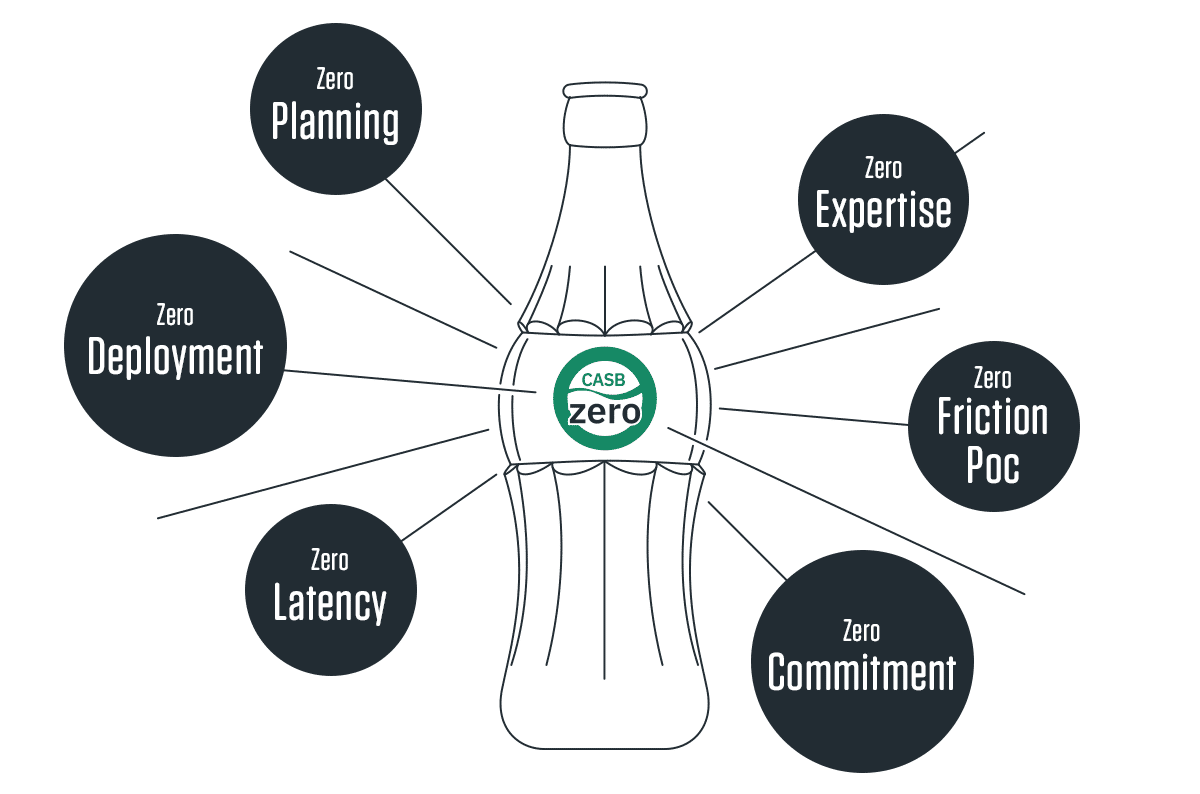|
Listen to post:
Getting your Trinity Audio player ready...
|
There’s An App for That
What used to be a catchphrase in the world of smartphones, “There’s an app for that”, has become a reality for enterprise applications as well. Cloud-based Software as a Service (SaaS) applications are available to cater for nearly every aspect of an organization’s needs. Whichever task an enterprise is looking to accomplish – there’s a SaaS for that.
On the flip side, the pervasiveness of SaaS has enabled employees to adopt and consume SaaS applications on their own, without IT’s involvement, knowledge, nor consent. While CASB solutions, which help enterprises cope with shadow IT, have been around for quite a while, their adoption has been relatively limited and mostly on the larger end of the enterprise spectrum. As the shift to cloud trend has been adopted by nearly all enterprises of all sizes, and the need for a solution such as CASB being so evident, the question remains why are we not seeing greater adoption? Here are a few common objections:
It’s too complex to deploy and run
Deploying a stand-alone CASB solution is no trivial feat. It requires extensive planning and mapping of all endpoints and network entities from which information needs to be collected. It also requires continuous deployment and updating of PAC files and network collector agents. There is also typically a need to modify the network topology to allow cloud-bound data to pass through the CASB service.
It adds network latency
CASB processing in inline deployment mode can add significant network latency. When there is a need to decrypt traffic in order to apply granular access rules, there is additional latency due to encryption/decryption processing. Adding a CASB service to your traffic flow often means adding an additional network hop adding more latency still.
It requires domain expertise
While operating a CASB solution isn’t rocket science, it still requires a fair amount of knowledge and experience to implement correctly and ensure cloud assets and users are protected effectively. Many IT teams lack the resources and expertise to manage a CASB and simply pass on it.
I don’t see the need for CASB
This objection comes up more often than one might think. In many cases it is raised by IT managers who believe their SaaS usage is minimal and in check. To understand the full extent of an organization’s SaaS usage, there is a need for a CASB shadow IT report. But the report is available only after the CASB has been deployed. This deadlock often hinders enterprises from seeing the value and importance of CASB.
Cato CASB overview | Read the eBookKeep It Simple CASB
While CASB is undoubtedly an essential component for any modern digital enterprise, the abovementioned concerns are causing many IT leaders to keep their CASB aspirations at bay.
But what if we could make all of these hurdles go away? What if there was a CASB solution that takes away the deployment complexity, eliminates network latency, reduces the required expertise, and enables any IT manager complete insight into their SaaS usage without needing to invest time, effort or cost whatsoever?
This may sound too good to be true, but when we deploy CASB as part of true SASE cloud service, we are able to achieve this and bring CASB within reach of any enterprise.
But what does “true SASE” mean? And how does it help deliver on these promises?
True SASE means all edges. A true SASE solution processes all enterprise network traffic, this includes both on-site and remote users. Since all traffic passes through the SASE service, there is no need to plan or deploy PAC files, agents, or collectors of any kind. All the information the CASB needs is already available.
True SASE means single pass processing. A true cloud-native SASE service executes networking and security services in parallel as opposed to sequential service chaining. This means no additional latency is added by enabling the CASB service.
True SASE means unified management. A true SASE solution enables management and visibility of all networking and security services in a single-pane-of-glass management console. As all network edges, users, and applications are already defined in the system, adding CASB involves minimal additional configuration and ensures simple and fast ramp up.
True SASE means convergence. A true SASE solution fully converges CASB as part of the SASE software stack and enables it complete visibility of all cloud-bound traffic, without the need for any additional deployment or configuration. This enables any enterprise employing SASE to try CASB and view a full shadow IT report instantly, without effort, cost or commitment.
Cato’s SASE cloud is a true SASE service. It covers all edges, it is implemented as a Single Pass Cloud Engine (SPACE), uses a unified, single-pane-of-glass management system for all services, and fully converges all networking and security services into a single software stack. As a result, Cato is offering today a “CASB Zero” solution that requires zero planning and zero deployment, adds zero latency, requires zero domain expertise, and enables a zero friction and zero commitment PoC to any Cato SASE customer. Cato CASB – zero reason not to give it a try.










